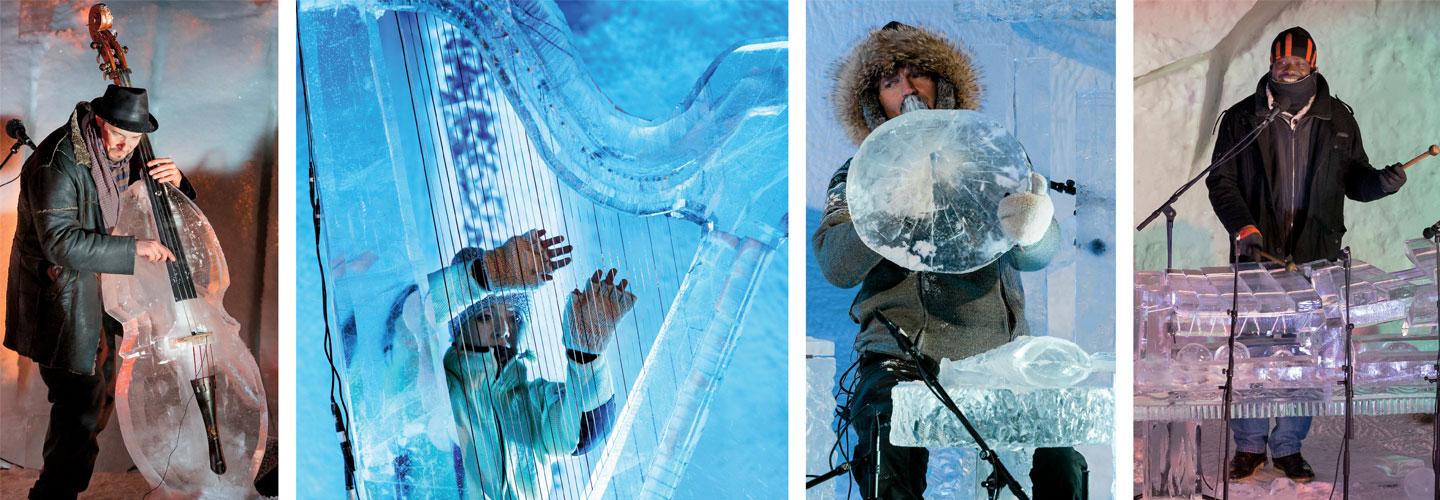JIM MCMAHON
How many musical instruments can you play? Terje Isungset (TAHR-yeh EE-soong-set) plays more than 20! He is a Norwegian musician who also writes his own jazzy songs. Every winter, he invites other musicians to perform with him in a four-day festival. This year, hundreds of people will gather in the chilly northern town of Finse, Norway, to hear the show.
But the instruments aren’t made from wood or metal like most instruments are. Instead, everything the musicians play—as well as the stage they play on—is almost entirely carved from ice!
Musicians and professional ice carvers work together in the freezing cold to build the ice instruments. They make everything from drums to horns to concert harps. Isungset founded the festival 13 years ago. He says the ice gives his music a unique quality. “It’s a surprisingly warm and gentle sound,” he says.
How many musical instruments can you play? Terje Isungset (TAHR-yeh EE-soong-set) plays more than 20! He is a Norwegian musician. He also writes his own jazzy songs. Every winter, he hosts a festival that lasts four days. He invites other musicians to perform with him. This year, hundreds of people will gather. They will go to a chilly town in the northern part of Norway. It’s called Finse. They will come to hear the show.
Most instruments are made of wood or metal. But instruments at the festival are made almost entirely of ice! So is the stage that the musicians play on.
Musicians and professional ice carvers work together. They build the ice instruments in the freezing cold. They make everything from drums and horns to concert harps.

